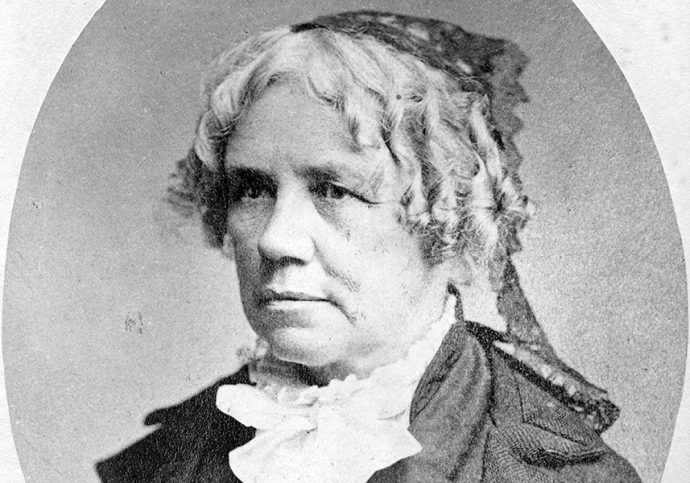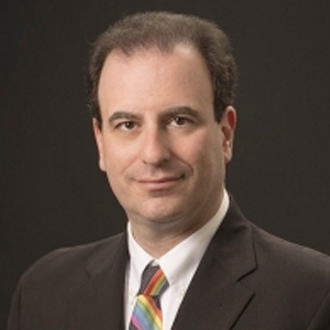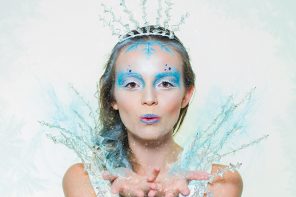Over the past few years, a great deal of discussion has been focused on encouraging more young women to pursue careers in the STEM fields — science, technology, engineering and mathematics. Back in Maria Mitchell’s day, that was not an issue, if only because young women were not expected to pursue careers, let alone receive a higher education.
But throughout her life, Maria did not fall victim to the limits that society placed on women. She created opportunities where none previously existed and forcefully laid the groundwork for social, intellectual and economic equality. While her name is not widely known today, she was in her prime one of America’s most prominent astronomers and women’s rights advocates.
Maria was born on Nantucket on Aug. 1, 1818, one of William and Lydia Mitchell’s 10 children. The Mitchells were Quakers who believed that boys and girls were deserving of the same quality of education. As a result, Maria attended local schools and received her father’s devoted attention when it came to scientific and mathematical tutoring.
William Mitchell was a bank cashier, but he was also an amateur astronomer and a colleague of William Cranch Bond, the first director of the Harvard College Observatory. Using her father’s 2-inch reflecting telescope, Maria focused on astronomical studies and gained a profound degree of expertise on the subject. But as there were no jobs for women in astronomy during her youth, she sought her own financial independence by working as a schoolteacher and then as a librarian at the Nantucket Atheneum. At night, when the weather permitted, Maria would take to the roof of her family’s house and scan the heavens through her father’s telescope.
On the evening of Oct. 1, 1847, Maria excused herself from a party being held at her family’s home and took to the roof to continue her observations. Peering into the telescope, she spotted something out of the ordinary — a blurry streak that was not visible to the naked eye but could be clearly viewed through the telescopic lens. Believing that she came upon a hitherto unknown comet, she informed her father of her observation. The following night, she located the object again and recorded its position in the sky. On Oct. 3, Maria’s father sent a letter to the Harvard College Observatory informing them that his daughter identified a comet that was new to science.
During this period, the astronomy-loving King Frederick VI of Denmark had offered prizes for the discovery of new comets. The comet that Maria located had also been seen by several European astronomers, but the confirmation of the sighting by Maria was the first to be recorded. As a result, the king awarded a gold medal to Maria, which immediately elevated her to global celebrity as the first American woman astronomer. The comet, while formally named C/1847 T1, became better known as “Miss Mitchell’s Comet.”
Maria’s prominence opened doors that were long closed to women. In 1848, she became the first woman to be named to the American Academy of Arts and Sciences. One year later, she was invited to make computations for the American Ephemeris and Nautical Almanac. In 1850, she was elected to the American Association for the Advancement of Science. During this time, she kept her librarian job at the Nantucket Atheneum, not leaving until 1856 in order to embark on domestic and foreign travels to meet with other scientists. While in Rome, she lobbied forcefully and successfully to break the gender barrier that prevented women from entering the Vatican Observatory.
Despite her pioneering achievements, Maria never let fame corrupt her sensibilities. “It is really amusing to find one’s self lionized in a city where one has visited quietly for years; to see the doors of fashionable mansions open wide to receive you, which never opened before,” she wrote in her diary. “One does enjoy acting the part of greatness for a while! I was tired after three days of it and glad to take the cars and run away.”
In 1865, she was hired by Vassar College as professor of astronomy, the first American woman to hold that title. True to her nature, Maria did not take her academic duties lightly. Using a 12-inch telescope (the diameter of its main optical element), the second largest in the country (only Harvard had a larger instrument), she encouraged her female students to look beyond mere observations of the celestial wonders. She also started a trend in astronomy studies by actively encouraging field studies. She traveled with seven of her students to Burlington, Iowa, in 1869, to view a total eclipse of the sun, and took five students to the Indian territory near Denver in 1878 to view another eclipse. The students’ findings were published in prestigious scientific journals and helped to expand academic knowledge of space.
Throughout her teaching, Maria stressed that her students should absorb the proverbial bigger picture. “We especially need imagination in science,” she stated. “It is not all mathematics, nor all logic, but it is somewhat beauty and poetry.”
While she worked to achieve equality in the educational standards between men’s and women’s colleges, she also expected equal pay for male and female professors. She waged a multiyear struggle with the Vassar hierarchy to close the wage gap that separated professors by gender, even threatening to quit if the matter was not resolved amicably. (It was, in her favor.) Believing in a wider view of social equality, she was a founding member of the American Association for the Advancement of Women in 1872 and later served as the group’s president.
“Until women throw off reverence for authority they will not develop,” she exclaimed. “When they do this, when they come to truth through their own investigations, when doubts lead them to discovery, the truth they get will be theirs and their minds will go on unfettered.”
Maria Mitchell died in 1889 and was buried next to her parents in Nantucket’s Prospect Hill Cemetery. Matthew Vassar, the founder of the eponymous college, gave the finest tribute to this amazing force of energy: “Let the foremost woman of our land be among the most advanced and honored pilots and guardians of coming woman.”





